I was tasked with designing an embroidery pattern that could be used on lingerie and clothing, which surprised me. This is because I had this perception that the interns were often not so involved in the integral design work, focusing on management tasks or supporting the designer in minor aspects to help them work smoothly. However, discussing with Ansel about this, I was told that the “hierarchy” does not matter anymore – they saw me as someone with potential, and trusted in my skill and knowledge about the customer and the market. When I received this task I was very grateful and pleased, as I never imagined my design or drawing to come to life in the form of clothwear, moreover sold to customers. The designer, Rio, has told me that this would be an amazing opportunity for me to showcase my skills and include them in my portfolio as it shows the development process. I was so touched that she had thought about it this far, handing over the task to me – I am surrounded by so many great people.
Brief
Moving onto the designing process, the task was to create a floral embroidery pattern that would be stitched as broderie anglaise and used on lingerie and clothing. Here are some of the references encapsulating the direction she wanted :
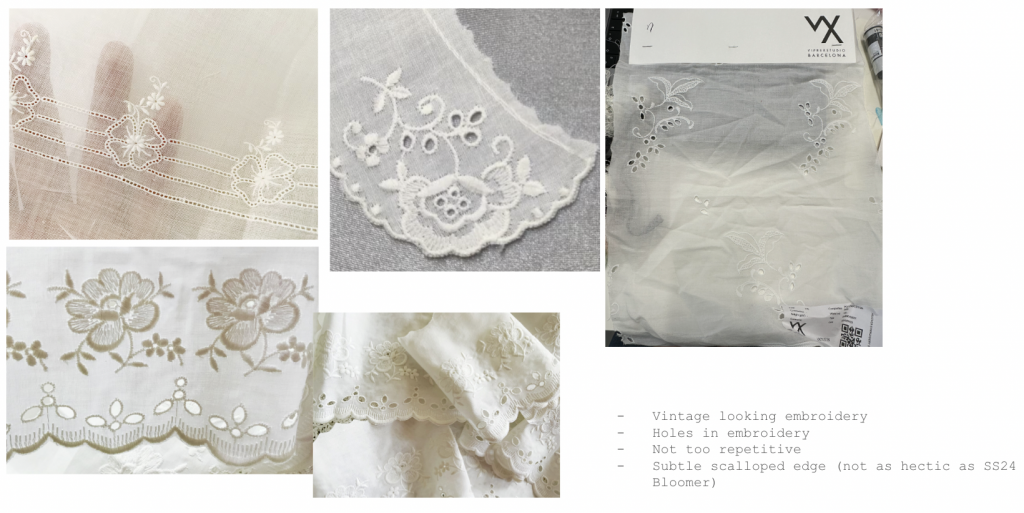
- Vintage & Floral
- Scalloped but simple edge
- Flower to ascend tall in height
- Seamless continuation when made into a pattern
- Does not have specific orientation –> can be used upside down
Taking these into consideration, I sketched some designs as a starting point.
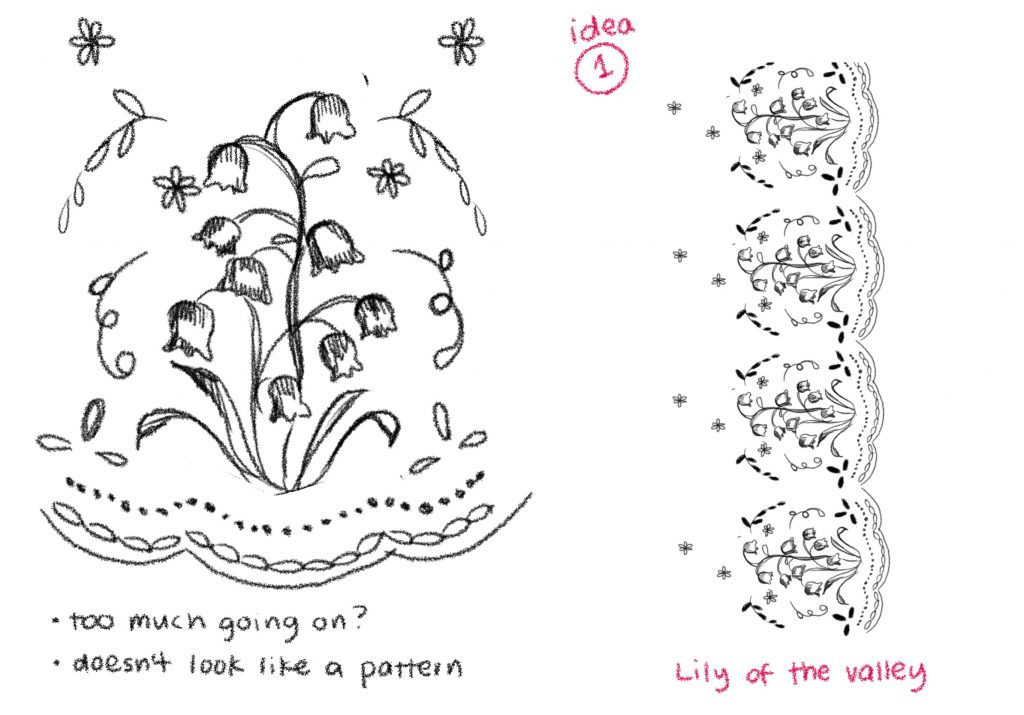
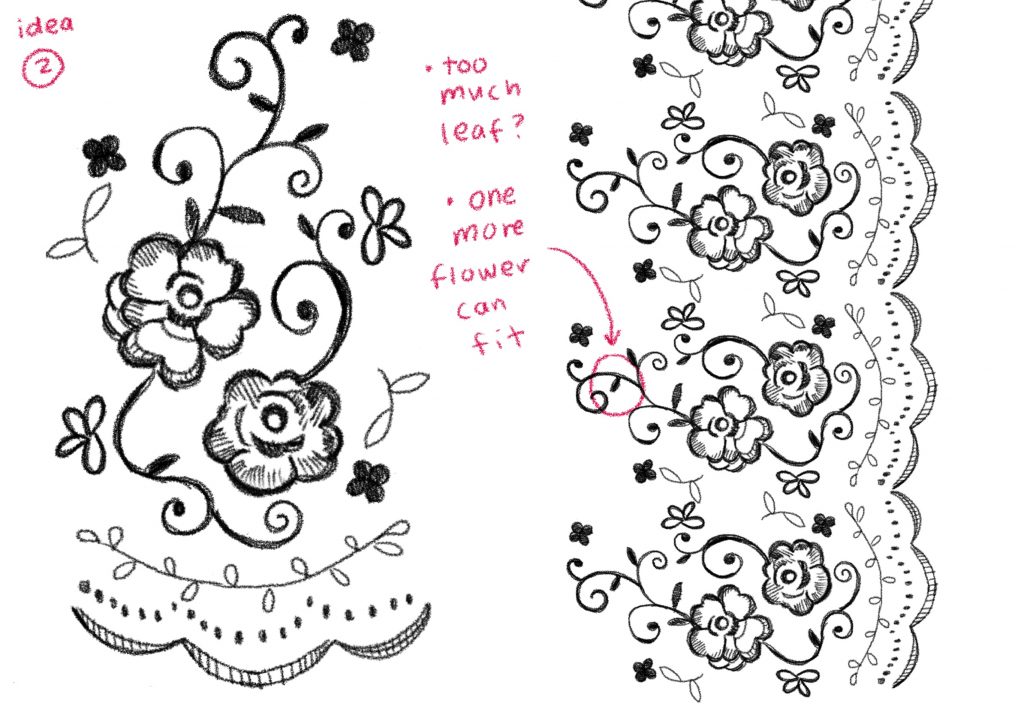
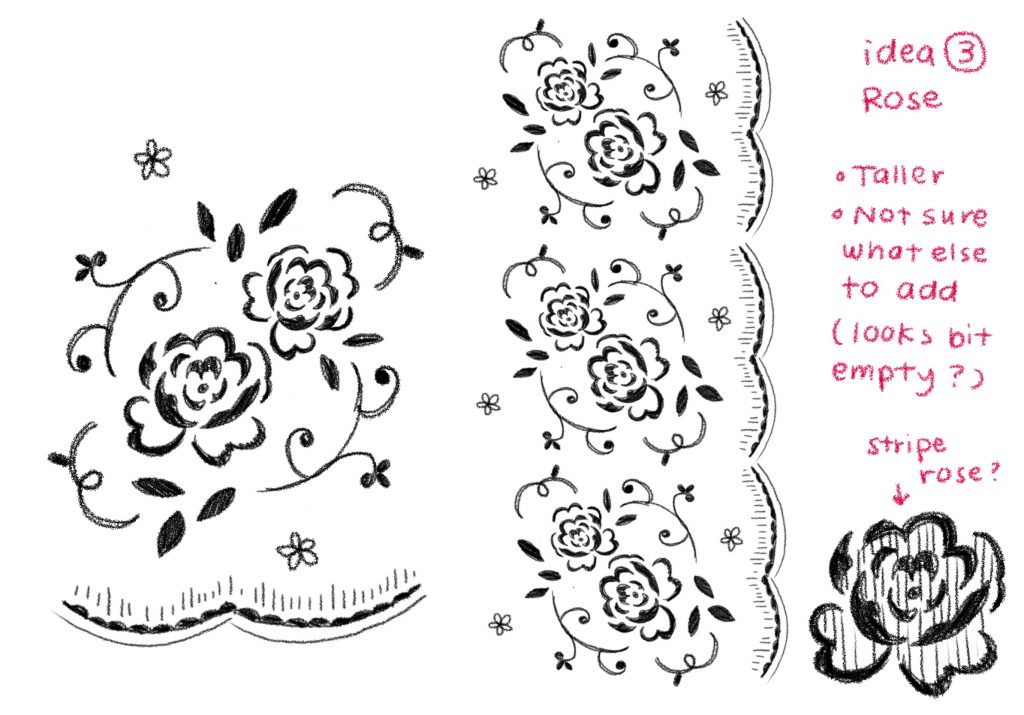
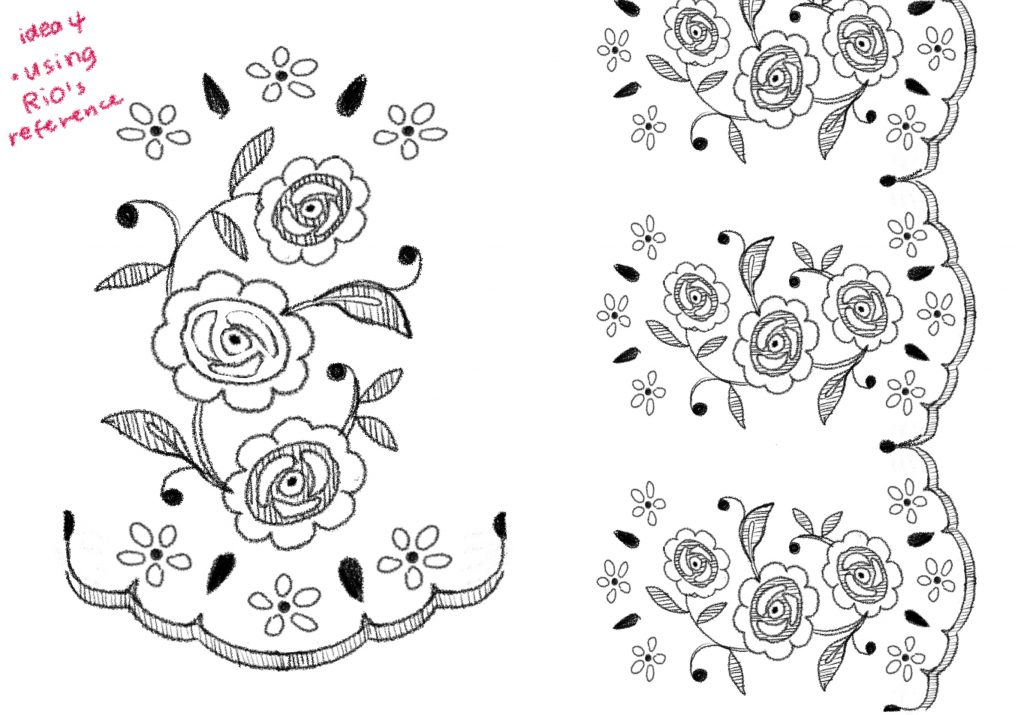
I included flowers such as the lily of the valley and rose for the initial idea, as she liked the appearance of more abstract flowers – not ordinary flowers with 5 petals. Although I was slightly unconfident about the designs, I received very positive feedback! She liked roses the most, which I further developed, and the idea of using the lily of the valley – which she said could be potentially used in other pieces.
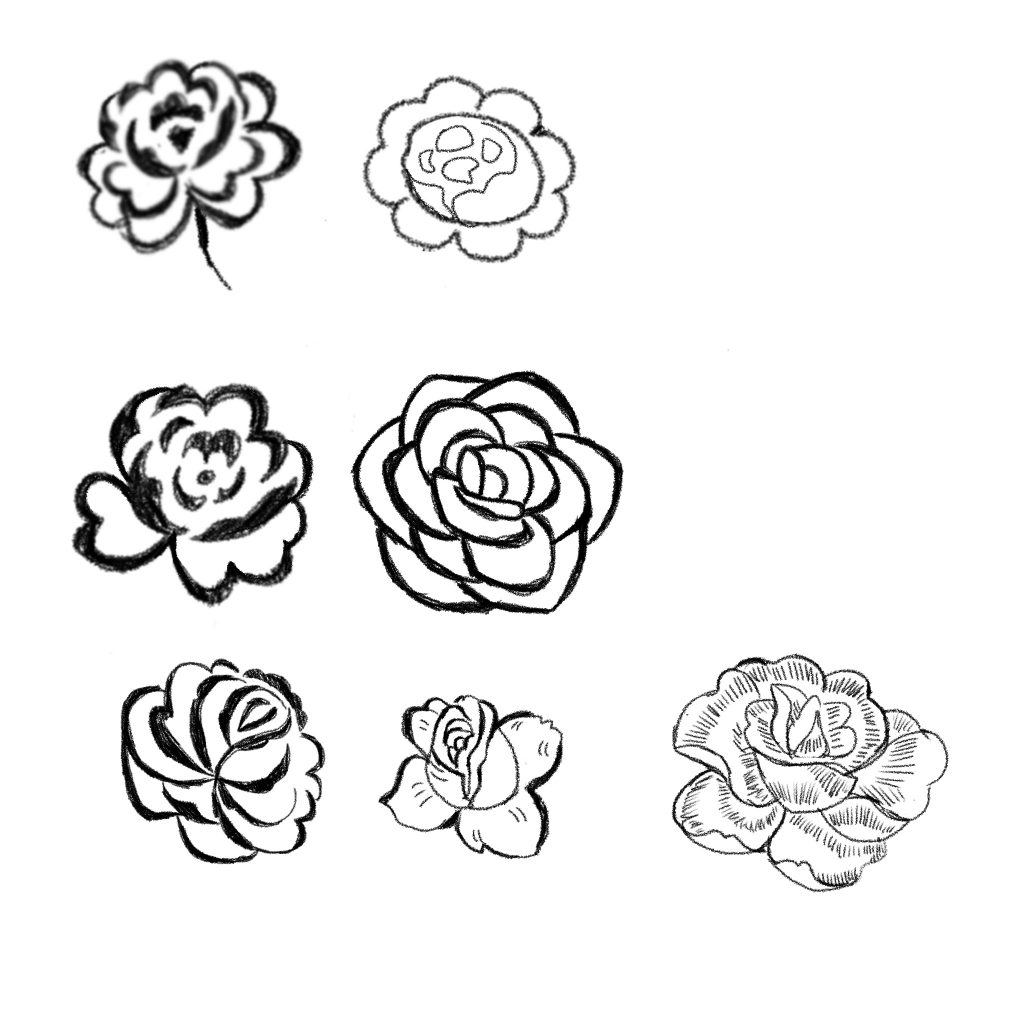
Quote from my journal: “Thoughtful process –> ideate, coming into form –> realisation –> feedback from customers/public. I can experience both aspects of the brand: designing and managing which gives me deep. insightful knowledge of how a relatively small brand, like Fruity Booty works. The experience is truly amazing, and there’s lots to learn! It truly motivates me to progress forward, and I’m very thankful to everyone who made this come true. The design process is not simple. but very fun! Seeing my creativity come to reality is fascinating, which is something I hope to see more in the future.”
Experiments
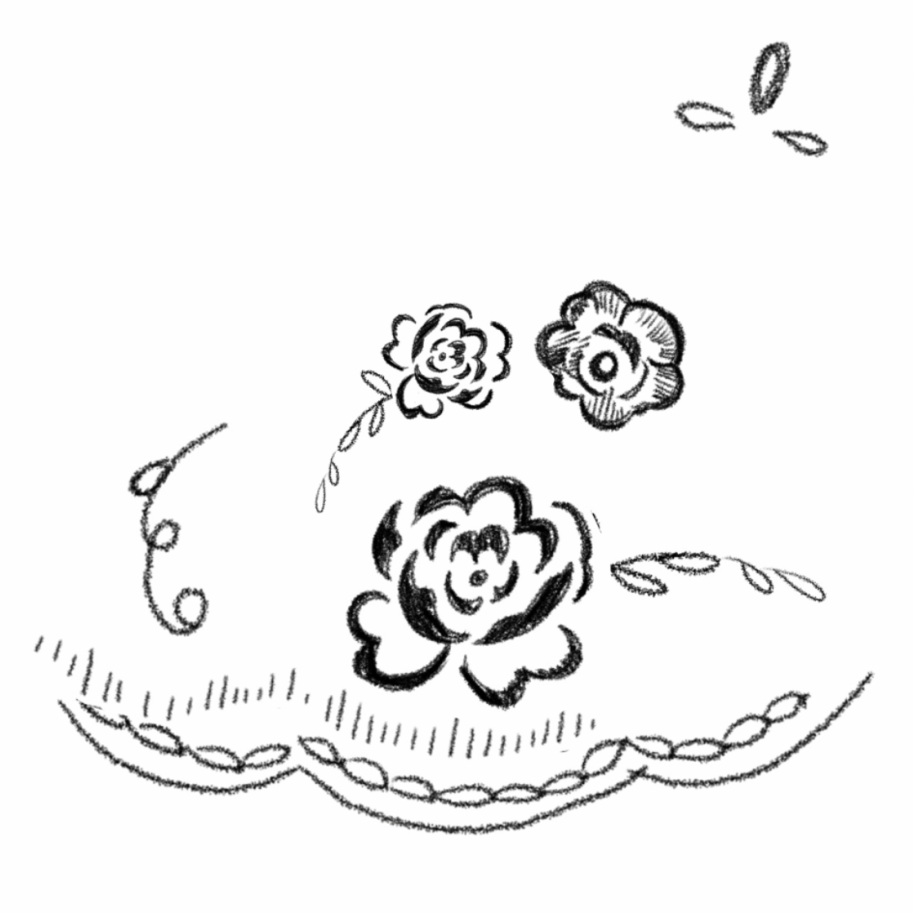
After discussing the ideas I had come up with, we deconstructed the pattern to pick out the details we liked and assembled them to achieve a new pattern. It looks like this!
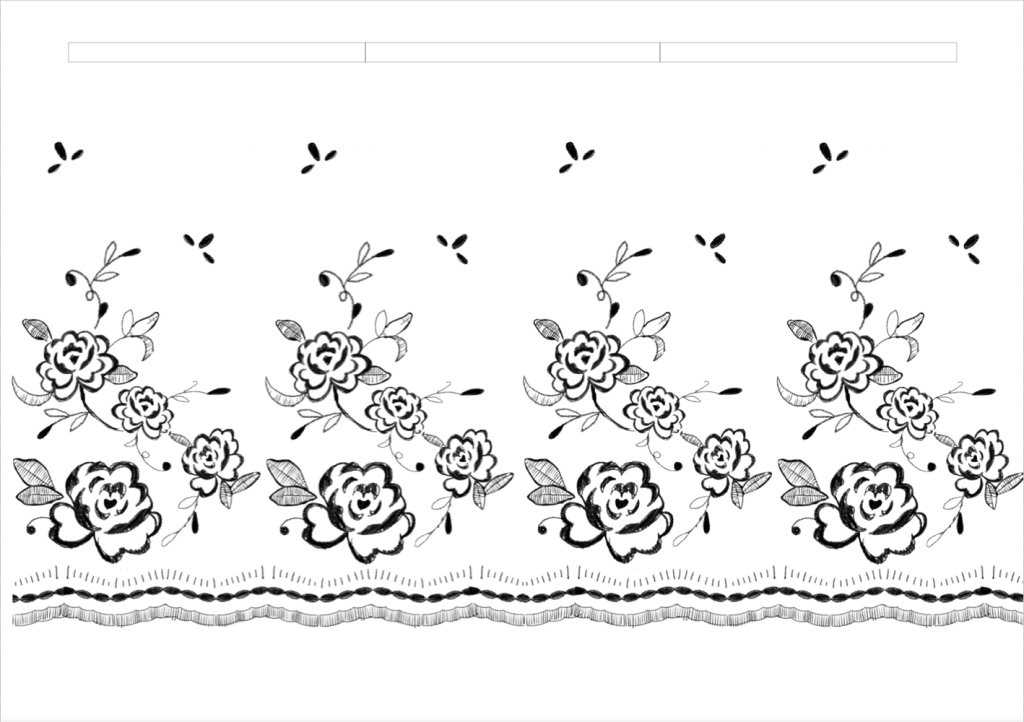
I was very happy with how this turned out! The roses look elegant but have cuteness and the filled lines create a nice contrast. I’m also pleased with the scalloped edge, I like how seamless they look when repeated. Now that the base design was done, I moved on to resizing, refining, and printing the pattern to experiment with the scale.
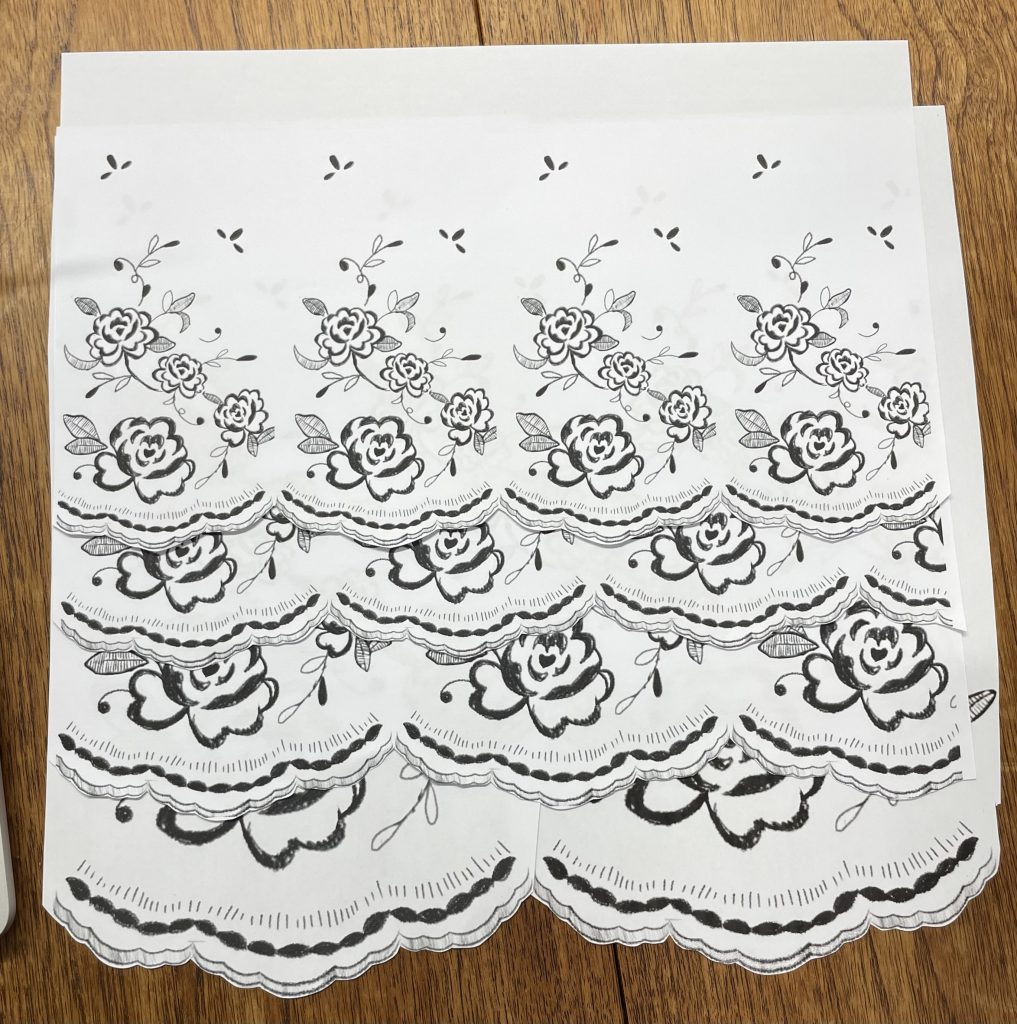
The most important detail I had to carefully consider was the pattern’s overall scale (the size of the rose, hole, edge, etc.). I printed out multiple scales to see how they look when used as a bra fabric, holding them against my chest and measuring. Something I learnt through this experiment is that because we will be using the same pattern across all the bra sizes, the pattern needs to be neither too big that the pattern is cramped and cut off on a smaller bra, nor too small, creating emptiness when used on a bigger-sized bra.
Another detail was the orientation of the roses. The roses cannot be facing a specific direction, thinking about the perspective of the person wearing it (looking down on the pattern) and that of the person looking at the pattern directly from the front. Therefore I had to arrange the orientation of the roses.
Deciding whether the hole was going to be filled or kept empty was significant to create a balance. This was difficult as the impression could differ between looking at the pattern and the real sample.
The other change that was made is the scalloped edge. It was pointed out that the end of the edge I drew appears to be digging up too high, which brings focus to the digged-in bit and not the edging as a whole. I strongly agreed with this point as I felt the same, but it was challenging to create an edging that does not appear too hectic.
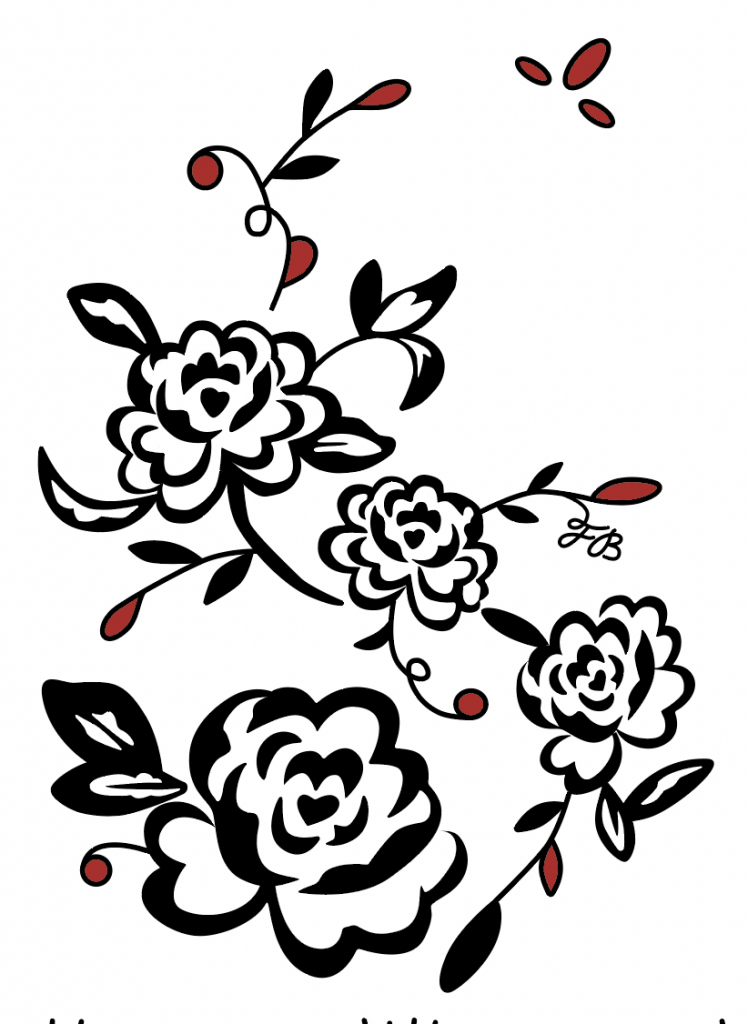
The scale was finalised and I vectorised it in Illustrator. Because we were creating a customised embroidery pattern, it was discussed that we should include the FB initial. I tested with a few options for this as well.
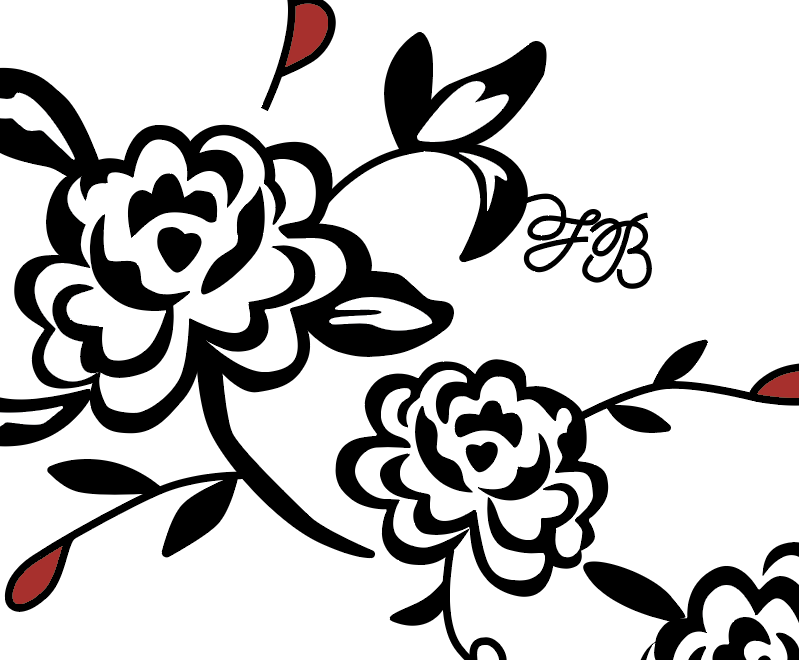
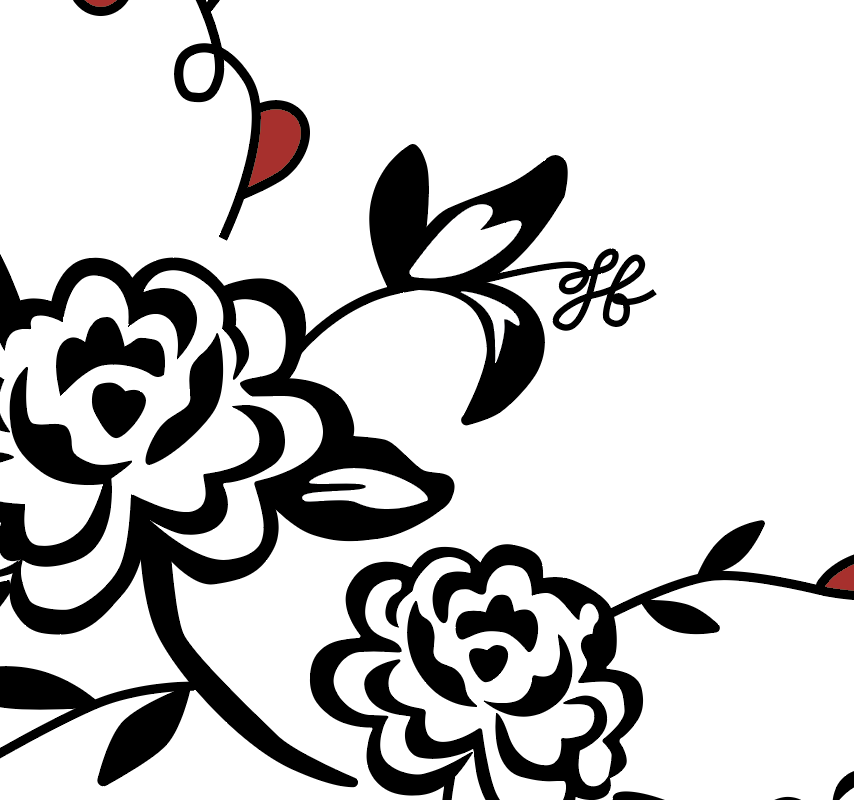
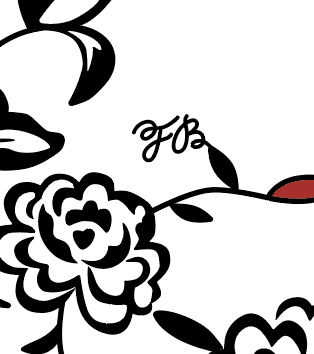
Almost there!
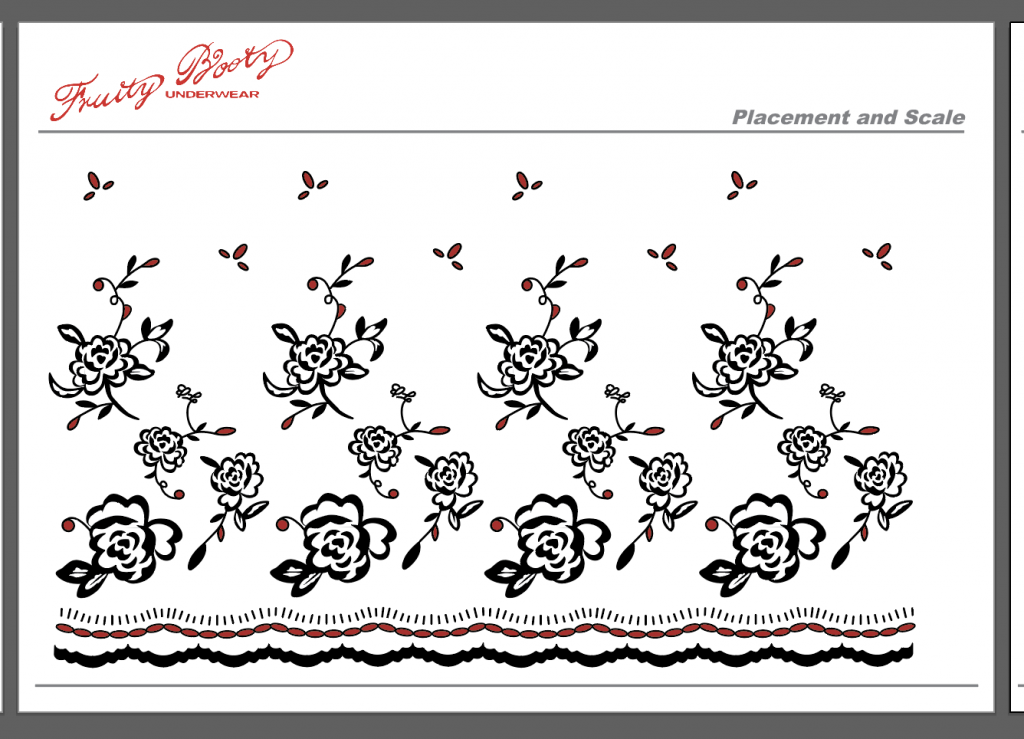
Finally, I rotated the roses so they wouldn’t appear as having the “correct” way of looking at them. I edited the other details pointed out, and it was sent to be embroidered!
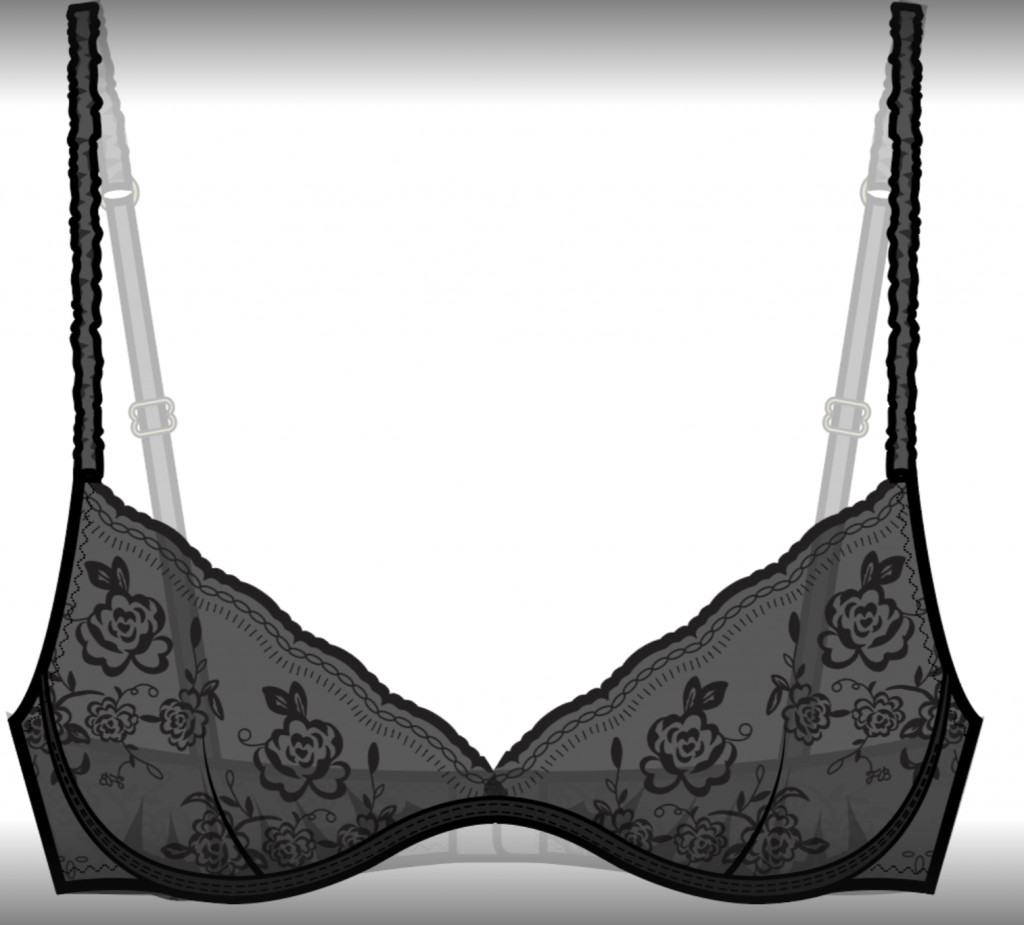
This is the CAD for the potential lingerie! The fact that I designed a pattern for Fruity Booty hit me when I saw this, and it made me emotional and proud. I was shocked at how pretty it actually looked, as it was above my imagination.
Quote from my journal: “I’m really learning a lot throughout this process. While enjoying the development, there are a lot of small details to consider, because I never experienced designing an embroidery pattern, it gave me a new perspective –> definitely changed how I’d look at embroidery from now on. This is an amazing opportunity that I feel I would never experienced if I hadn’t joined Fruity Booty. I was also moved by their openness to creativity –> allowing a new intern to design was quite surprising, but I am extremely grateful!”
: “I may have been undervaluing/underestimating myself to protect myself. This felt disrespectful to everyone who believed in me and made me think that I should have greater confidence, so I could prove to those who had faith in me that they were not wrong. And for myself, to acknowledge my own effort. I’m lucky and grateful!”
I am super excited to see the final product!

Leave a Reply